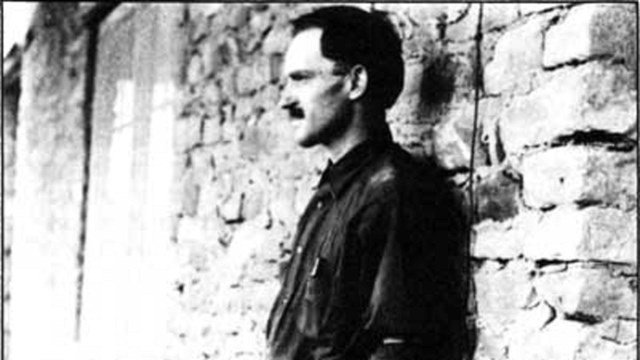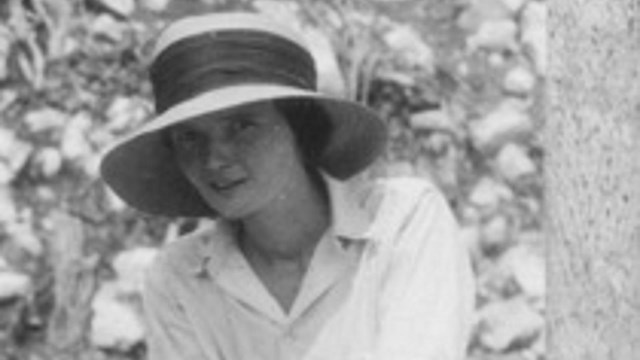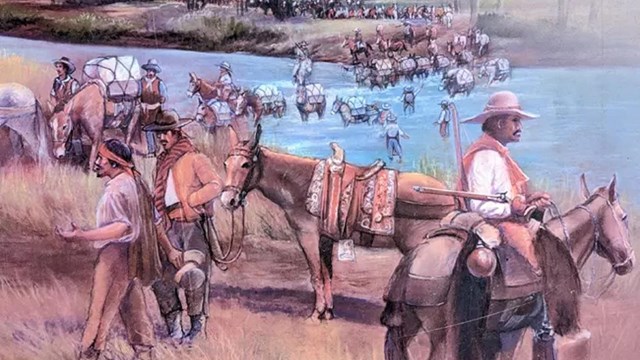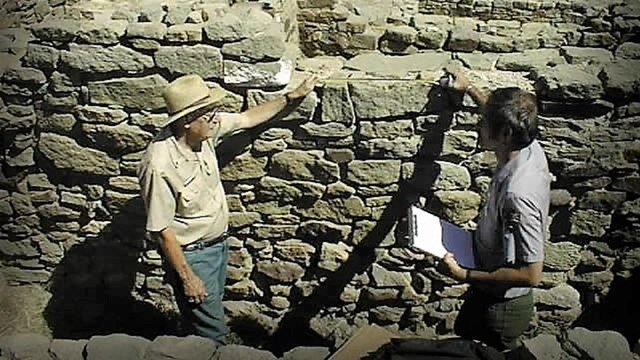Ancestral Pueblo People at Aztec Ruins
Early settlers mistakenly thought that people from the Aztec Empire in Mexico created these striking buildings. They named the site “Aztec,” a misnomer that persisted even after it became clear that the builders were the ancestors of many Southwestern tribes. The people who built at Aztec and other places throughout the Southwest were called “Anasazi” for many years. Archeologists had adopted that word from the Navajo language, which they understood to mean "ancient ones," and then popularized its use. Most Pueblo people today prefer that we use the term “Ancestral Puebloans” to refer to their ancestors.
An Ancient Community
Aztec Ruins, built and used over a 200-year period, is the largest Ancestral Pueblo community in the Animas River valley. Concentrated on and below a terrace overlooking the Animas River, the people at Aztec built several multi-story buildings called “great houses” and many smaller structures. Associated with each great house was a “great kiva”—a large circular chamber used for ceremonies. Nearby are three unusual “tri-wall” structures—above ground kivas encircled by three concentric walls. In addition, they modified the landscape with dozens of linear swales called “roads,” earthen berms, and platforms.
An interesting 700 yard trail leads visitors through the West Ruin, an excavated great house that had at least 400 interconnected rooms built around an open plaza. Its massive sandstone walls tower over 30 feet. Many rooms contain the original pine, spruce, and aspen beams hauled from distant mountains. Archeologists excavated and reconstructed the Great Kiva in the West Ruin plaza, and it now evokes a sense of the original sacred space.
The construction at Aztec shows a strong influence from Chaco Canyon, the site of a major Ancestral Pueblo community to the south. Aztec may have been an outlying community of Chaco, a sort of ancillary place connected to the center to distribute food and goods to the surrounding population. It may have also been a center in its own right as Chaco’s influence waned after 1100.
Excavation of the West Ruin in the early 1900s uncovered thousands of well-preserved artifacts that provide glimpses into the lives of the Ancestral Pueblo people. A remarkable variety of food remains, stone and wood tools, cotton and feather clothing, fiber sandals and mats, pottery, and jewelry made of turquoise, obsidian, and shell reveal much about their use of local resources and trade with others.
In about 1300 the Ancestral Pueblo people left the region, migrating southeast to join existing communities along the Rio Grande, south to the Zuni area, or west to join the Hopi villages in Arizona.
Aztec Ruins National Monument connects people of the past with people and traditions of today. Many Southwestern American Indians today maintain deep spiritual ties with this ancestral site through oral tradition, prayer, and ceremony. The site offers visitors opportunities to learn about these remarkable people and their descendants and to forge connections with the monument’s timeless landscape and stories.




